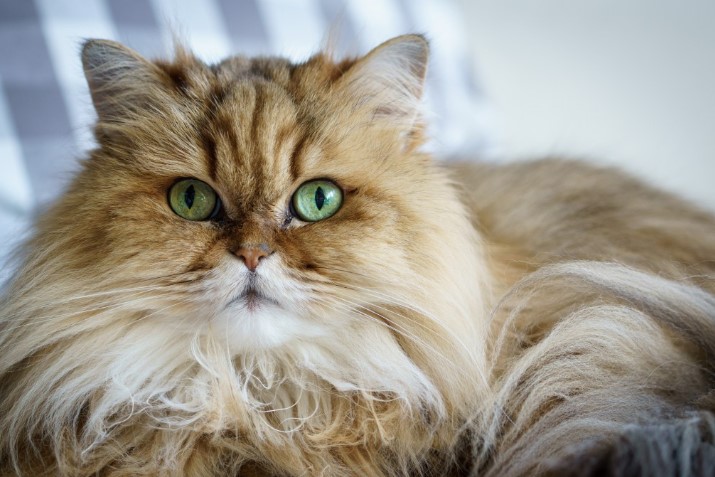An Exhibition of Cat Art Worthy of a Meowseum

Cats have descended upon Maspeth, Queens, where Mrs. gallery is featuring the work of 39 artists focused on a single theme: furry felines. Cats have been an art historical focus for thousands of years, and the gallery’s latest exhibition, titled Even a Cat Can Look at the Queen, suggests they are here to stay.
From Cait Porter’s loving rendering of a fuzzy tabby’s paw to a Philip Hinge chair sculpture made out of scratching posts, the exhibition includes works by longtime artists of Mrs.’s program as well as some who have never before shown with the gallery.

Almost all of the works are by living artists, with a few exceptions, including an Andy Warhol print that presents perhaps the exhibition’s most straightforward depiction of a cat. A painting by Renate Druks — movie star, director, and avid painter of cats — titled “Male Cat Club” (1980) evokes the visual language of the Hollywood Golden Age she lived through. The haunting image is full of gilding, velvet draping, and is punctuated by the vibrant hue of the red carpet. The setting looks like a movie or stage set and the outdoor views visible in the background evoke the dreary exteriors of film noir.


Other works in the show are decidedly more modern, such as Sophie Vallance’s “Tiger Diner” (2022), which features the checkerboard pattern and rounded aesthetic that has become popularized on social media over the last few years. But like Druks, Vallance places cats in a surprising setting; namely, sitting in a diner.
In both paintings — and in almost every work in the exhibition — cats display the utmost confidence, a holier-than-thou attitude that any cat parent will likely recognize in their own beloved pet. The animals take up space with dignity, suggesting that the oddity is not their presence but that of a human being.



Other highlights include Katharine Kuharic’s “Long Wait” (1990), an oil painting with such fine lines it looks like a tapestry, and Luke O’Halloran’s “Eeeeeeeeeee” (2022), which shows a terrified cat approaching its terminal velocity (but rest assured, cats seem to defy the laws of physics surviving plunges from high-rise buildings). Elbert Joseph Perez’s “Pierrot Greatest Performance” (2022) is a highly detailed portrayal of a cat presenting an ominous paw toward his toy likeness as an audience of creepy, obscured cats watches the animal from the dark.
Two pieces tap into the idiosyncratic quirkiness of our feline companions: “Kitty Infinity” (2022), a wall relief depicting three cats “intertwined in an endless circle of cleaning each other’s bums,” and Philip Hinge’s “keep me safe,” a bizarre and enthralling three-dimensional painting of a cat disguised as a fire detector, complete with a popcorn ceiling made of cat litter.


Johanna Strobel’s sculpture commemorates feline hero Félicette, the first cat in space, and Abby Lloyd’s “Enchanted Cat Girl” (2019), a pink anthropomorphic foam figure, assumes different facial expressions depending on where the viewer stands. Lloyd has impressively managed to keep the sculpture upright despite the figure’s enormous head.
The show’s title, Even a Cat Can Look at the Queen, comes from an old English proverb implying that even people of the lowest status — as low as a cat — have rights. After gazing at the works in the exhibition, however, the proverb seems too on-the-nose. With their distinguished attitudes and regal postures, it’s quite evident cats can “look at the queen.” As Anna Stothart notes in her essay for the show, perhaps the ancient Egyptians were right: Dogs may be man’s best friends, but cats are humans’ idols, and although they may bless us with companionship, we exist only to serve them.




















